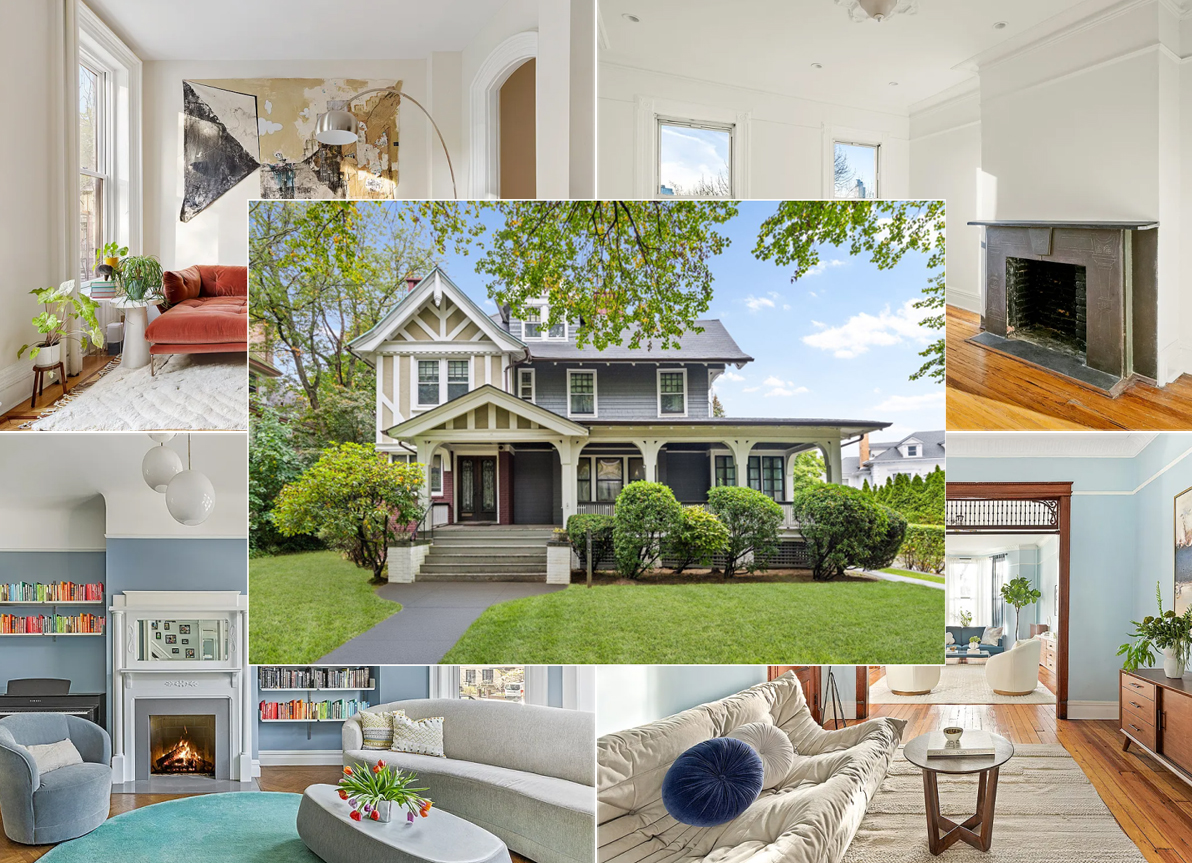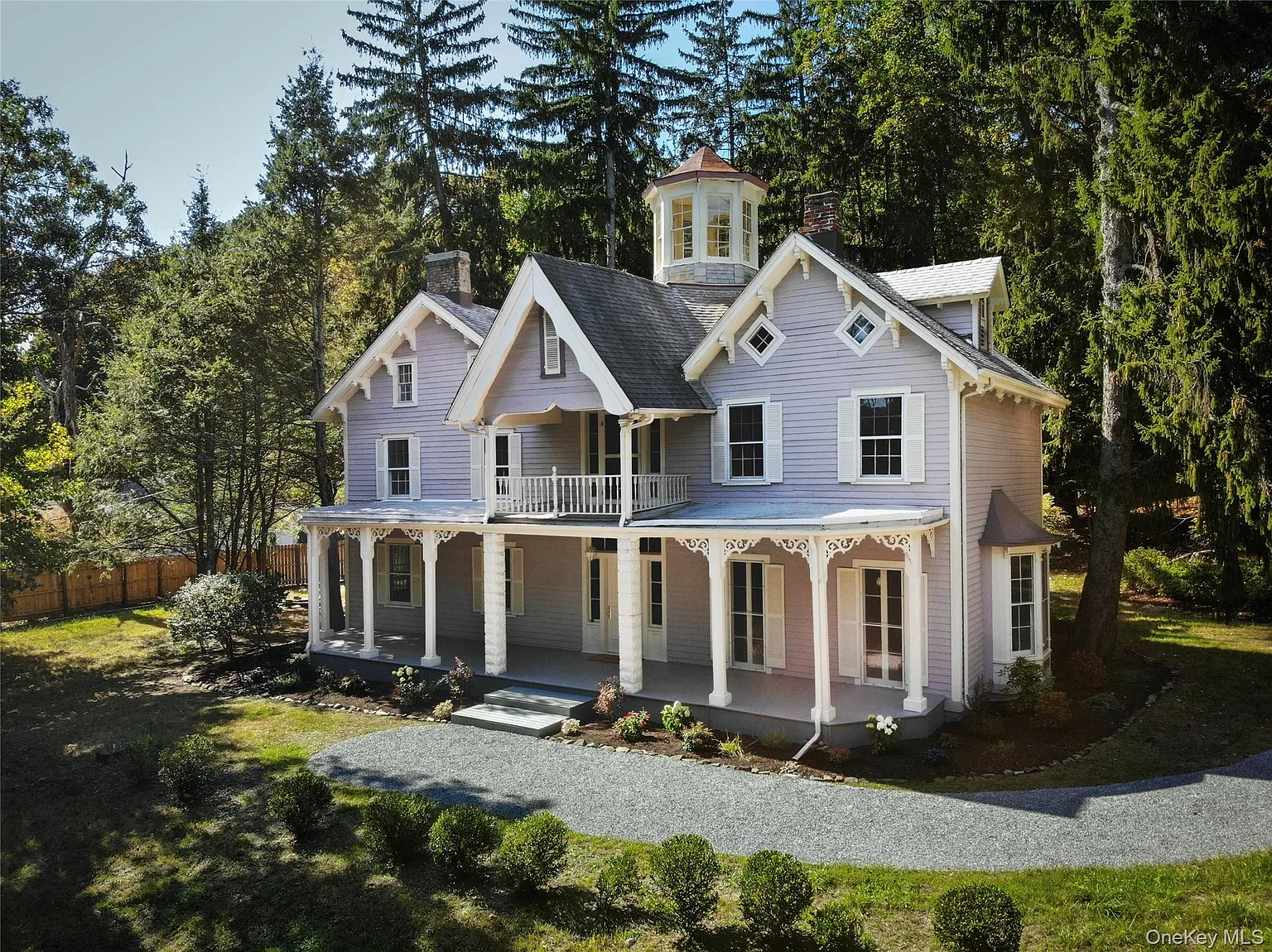Building of the Day: 2112-2114 Kenmore Terrace
Brooklyn, one building at a time. Name: Private houses Address: 2112-2114 Kenmore Terrace, off East 21st St Neighborhood: Flatbush Year Built: 1918-1919 Architectural Style: English Garden City Architect: Slee & Bryson Other buildings by architect: Albemarle Terrace, the block behind this, as well as houses in PLG, CHN, CHS, PS Landmarked: Albemarle-Kenmore Terrace HD, designated…


Brooklyn, one building at a time.
Name: Private houses
Address: 2112-2114 Kenmore Terrace, off East 21st St
Neighborhood: Flatbush
Year Built: 1918-1919
Architectural Style: English Garden City
Architect: Slee & Bryson
Other buildings by architect: Albemarle Terrace, the block behind this, as well as houses in PLG, CHN, CHS, PS
Landmarked: Albemarle-Kenmore Terrace HD, designated in 1978.
The story: Who doesn’t like these? They are cute as a button, wide enough to move around in, and have garages. What more could one ask? I’m sure the developer, Midwood Associates, for owner Mabel Bull, knew that, too. The houses in both parts of the Historic District were built to appeal to middle class family buyers. Albemarle Terrace, behind this block, is totally different in architecture, with houses in a more classic Neo-Federal style. This group owes its design to the Garden City Movement, which had its origins in England, at the turn of the 20th century, which sought to combine the best of suburban and city living, with low scale development, picturesque housing, lots of open space, gardens, and an isolation from commercial and industrial areas. In the US, the first, and one of the best examples of the Garden City Movement is Forest Hills Gardens. This movement also coincided with the growing popularity of the automobile for the middle classes. In cities, many developers sought to provide for the auto by building service alleys with garages, but there was not enough room here in the Terrace. Slee and Bryson designed the garages as attached to the house, with a ground floor entrance onto the street, one of the very first group of homes to have this feature. And they look great. Today, as used as most people are to suburban cottages with attached garages, we miss the importance of these houses, because they were among the first, and the best. They would be copied and modified throughout the 20th century. All six houses in the group sold out immediately after being finished, and are still much in demand. These houses are directly across the street from the Parsonage of the Reformed Church, a recent BOTD.






Each townhouse is 26 feet wide, so they are generously sized, allowing a more modern layout compared to narrower brownstones that have a railroad layout (where front parlor would lead into the back parlor, for example). They have cute south-facing sun rooms and gardens in back with a shared alley-path separating the Albemarle Terrace houses’ back gardens from these.
I used to live in Hampstead, London – a stone’s through from the first garden suburb – Hampstead Garden Suburb, which is still an absolutely lovely place to live and just a short subway ride from the city. Interestingly, what we consider “city,” Londoners consider “suburbs.” They make a very clear distinction between “inner” and “outer” (more American style) suburbs. Most of Brooklyn would be viewed as an “inner” New York City suburb from that perspective. Which it was, 100 years ago.
Rob, I have no doubt that, if you lived there, I also wouldn’t call what you had in the back a garden.
These kind of mansions hiding rowhouses, where a multifamily is “hidden” within what looks like grander (usually English styled) home are fun. A very popular motif in the post-WWI era, they are quite common in some parts of the Bronx. The garage was becoming a must-have at this point in time, even for middle-class housing, and the way that they were incorporated into the composition is usually quite ingenious (Slee & Bryson, by the way, also designed parking garages!).
Not sure that I’ve seen many of these multi-family mansions in Brooklyn, but this is a bit south of my usual haunts! This is also a particularly grand example of the genre, too.
it’s not that most americans are anti-green, it’s just that they dont give a crap, which honestly, given the state of the world as it is and bigger issues at hand, i cant really blame them. i like these houses tho. and ive always called it a yard, never a garden. that just sounds flat out gay and pretentious.
*rob*
Minard – I think its because a large chunk of American are anti-garden. Look at how dismal most brownstone gardens are. For a start, they are called a “yard”. A yard is where you stock barrels, shunt trains, or chain your demented pit bull to a stake in the worn-smooth dirt.
To the urban American a garden is just a royal pain in the arse, and so they were dispensed with.
these are nice houses. interesting how the garden city movement never really caught on in Brooklyn. Perhaps as soon as families started owning private cars, the irresistible pull was away from the city.
These sorts of groupings are much more popular in England than in the US. Here we like our garden suburbs, not our garden cities.